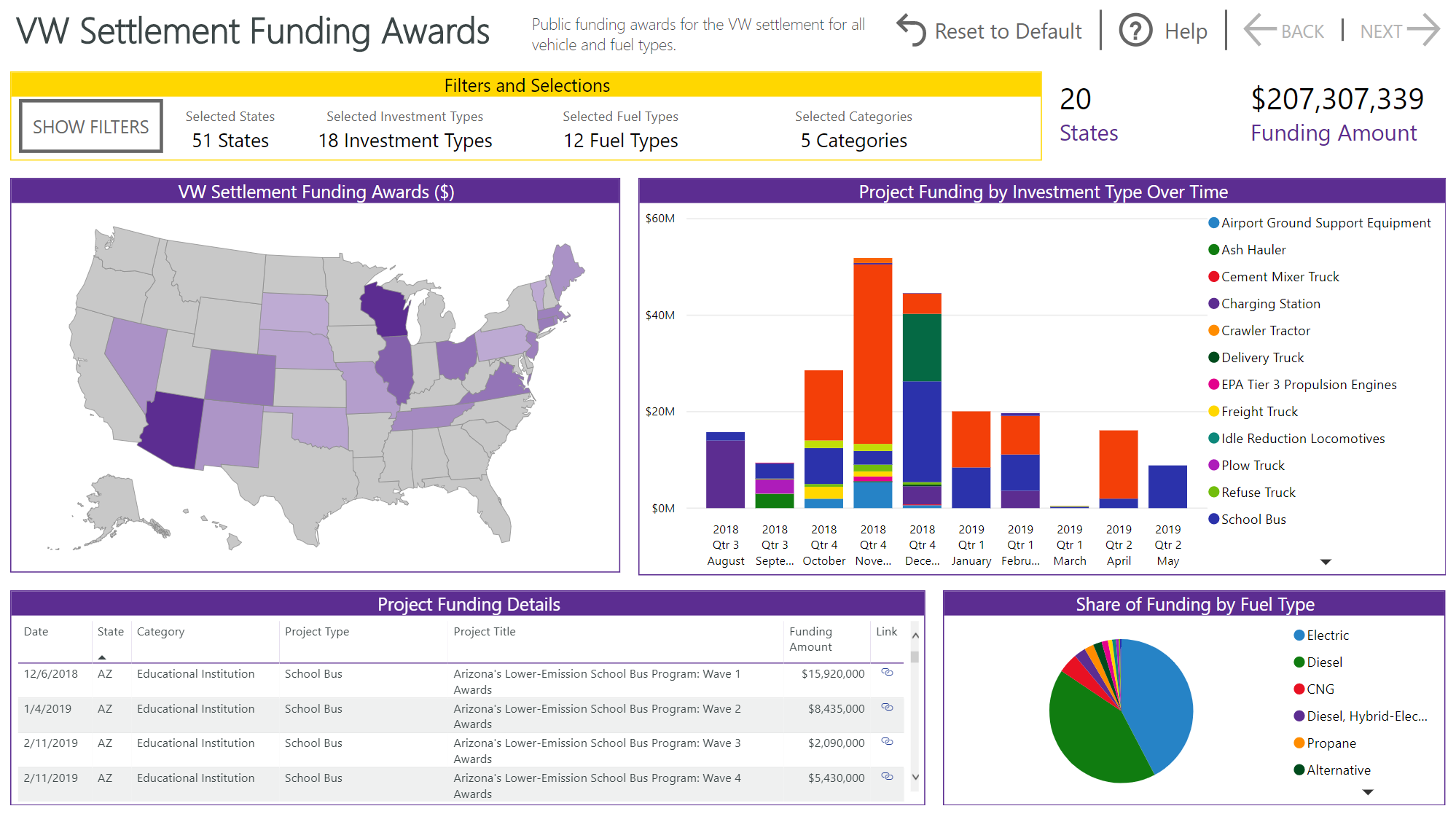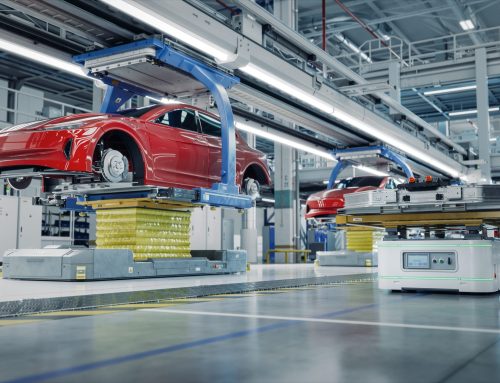
Three years following the finalization of the settlement agreement, less than 10 percent of the roughly $2.5 billion total in state mitigation funds has been awarded, according to the EV Hub VW Settlement Funding Awards dashboard. The story is mostly positive for transportation electrification with 42 percent of total funds awarded going to EV charging and electric trucks and buses. Electric transit buses alone account for more than 27 percent of the total $207 million that has been awarded since the first announcements last year.
A newly released scorecard from the U.S. Public Interest Research Group argues that states aren’t doing enough to prioritize transportation electrification. The report scored states based on the prioritization of EVs in their mitigation plans with 35 states, the District of Columbia, and Puerto Rico scoring a “D” ranking or worse. Indeed, existing state plans dedicate less than 30 percent of funds to electrification and that number falls to 16 percent when you exclude California.
States should take steps to dedicate more funds to transportation electrification through modifying their mitigation plans, but a closer look at the existing state plans and a scan of the announced funding awards reveals a more positive situation than the pessimistic headlines generated by the scorecard. Electric transit buses, for example, make up more than 63 percent of the total transit bus funding awards so far. In addition, some states that do not dedicate funds for electric trucks and buses in their plans, like New York, have indicated a very strong preference for funding zero emission projects.
Another positive development from the settlement is the growing state interest in funding EV charging infrastructure with 45 states committing to the technology. Of those states, 33 have indicated plans to spend the maximum 15 percent on charging deployment. These investments of more than $270 million could make a meaningful contribution to filling the expected charging gap.
Electric trucks and school buses, however, have not fared as well so far and that’s likely because these technologies are largely still in the pilot phase. Electric school buses have only received one percent of the total $63 million invested in school buses. At the end of 2018, it was estimated that there were more than 150 electric school buses in the United States with most of these concentrated in California (electric transit bus deployment was as high as 1,650 through the same period). More than three times as expensive as conventional alternatives, electric school buses are unlikely to generate lifetime savings for operators under current market conditions due to low usage.
Electric trucks face similar challenges to electric school buses in terms of market readiness. Although states liked Minnesota have dedicated funds to pilot electric trucks, none have pulled the trigger on awarding funds yet.
States can overcome challenges with these new technologies by seeking synergies between public funding, clean transportation targets, and electric utility engagement. Hawaiian Electric seeks to support Hawaii’s mitigation plan and clean transportation goals by offering reduced rates for off-peak transit bus charging. This is just one example of when the VW settlement has generated new partnerships. Combined with other programs including the Federal Low-No Grant Program to subsidize the purchase of electric transit buses, states have significant resources at their disposal to commit to transportation electrification.


